Reader Peter commented: “I made garlic cucumber pickles according to your formula (3% salt solution by weight). Quite simple, I thought. Almost too easy. The result was astonishingly delicious. I’m now requested and required to make them continuously.” ★★★★★
Pickles? Lacto-Fermented Pickles? Dill Pickles?
Sour Pickles? Half Sours? Kosher Pickles?
Cornichons? Polish Pickles?
Call them what you want, but that big, sour, juicy dill pickle sitting alongside your hamburger was introduced to America during the late 1800s and early 1900s with the arrival of a heavy influx of eastern European Jews in New York City.
These immigrants brought with them traditions from the old country. Dill pickles were one.
They took fresh cucumbers and piled them in large wooden barrels along with dill, garlic, spices, kosher salt, and clean water and left them to ferment for a few weeks to several months.
These naturally fermented pickles were then sold on pushcarts in the immigrant tenement district of New York City. Over time, Jewish-owned shops started selling pickles straight out of the barrel as what we know today as the pickle.
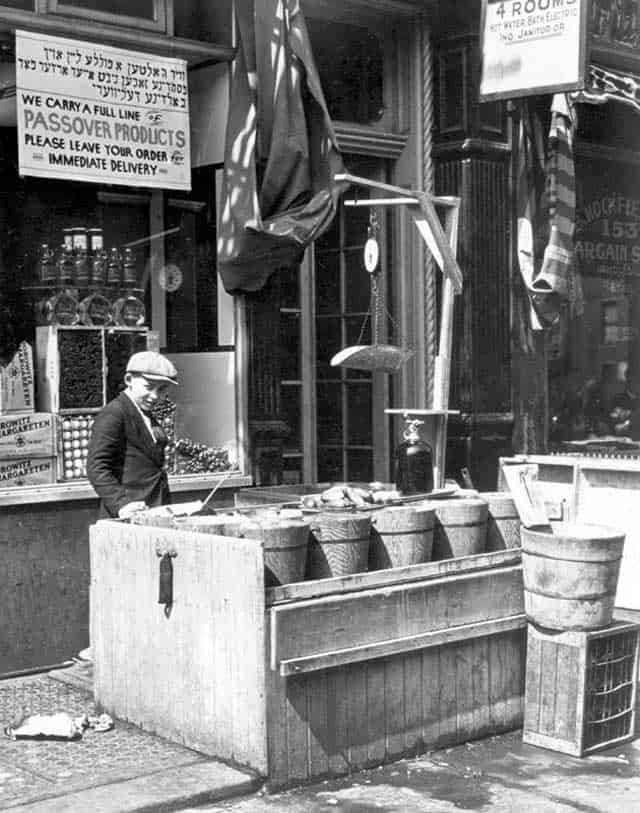
Pickles are not only made with cucumbers. Just about any vegetables—cauliflower, radishes, onions, green beans, and asparagus, to name a few—can be made into a “pickle.”
Today is for cucumber pickles. They taste crunchy and delicious and are easy to make.
First, do you know your pickles?
Do you know which ones are fermented in the same manner as the European immigrants?
Or, the difference between a half-sour and a full-sour?
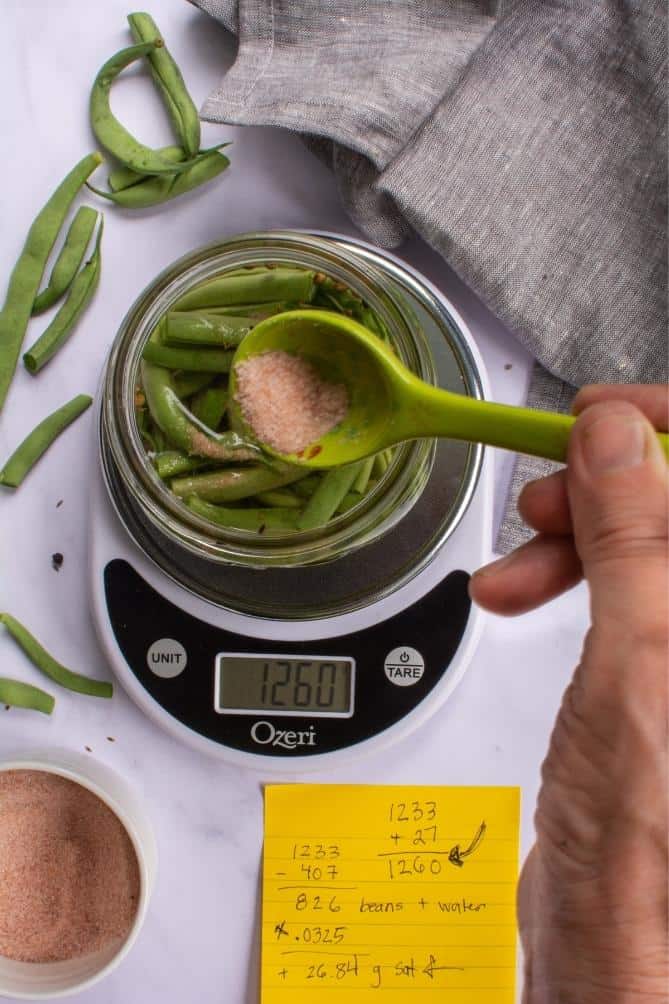
Get ready to be surprised by the wide variety of pickles you can safely & easily preserve at home.
Learn the Perfect Pickle Process in my online program and “grow” your own probiotic-rich superfoods. YUM!
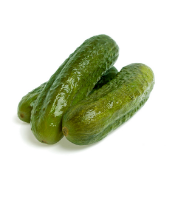
Each year, Americans as a whole eat more than 2.5 million pounds of pickles. That’s 20 billion pickles!
All About Pickles
Learn about the difference between store-bought pickles and naturally fermented pickles, pickle styles, and the health benefits of homemade Lacto-fermented pickles so that the pickle you enjoy supports healthy digestion.
Store-Bought Canned Pickles vs. Lacto-Fermented Pickles
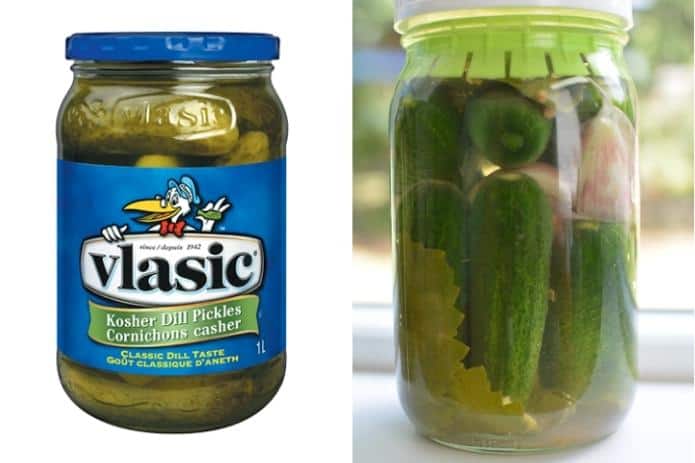
There is a world of difference between almost all pickles that you buy at the grocery store and the pickles I’m about to teach you how to make with just cucumbers, water, salt, and… no vinegar.
Store-bought pickles are made with vinegar, then processed in a hot water bath. The vinegar guarantees a sour flavor and acts as a preservative.
However, the vinegar prevents natural fermentation from occurring. And, the high-temperature canning process kills all health-promoting enzymes and beneficial bacteria.
Pickles that you ferment in your own kitchen using just salt and water create their own preservative—lactic-acid—as a by-product of the fermentation process.
During fermentation, the starches and sugars in the food are converted into lactic acid by lactobacilli. The lactic acid production is what gives fermented foods their unique sour smell and tang making them super nutritious and incredibly beneficial for digestion.
Here’s a quick look at 2 pickle jar labels: commercially processed pickles and naturally fermented pickles.
Which ones would you rather eat?
| Commercially Processed | Naturally Fermented |
| Fresh Cucumbers | Cucumbers |
| Water | Filtered Water |
| Vinegar | Unrefined Sea Salt |
| Salt | Garlic |
| Calcium Chloride | Black Pepper |
| Polysorbate 80 | Chili Pepper |
| Natural Flavors | Fennel Seed |
| Yellow #5 | Bay Leaf |
| Dill | |
| Cinnamon |
So don’t be fooled by the unhealthy versions of pickles, both home-canned and store-bought. Unlike the pickles introduced to America in the late 1800s by Jewish immigrants, these modern foods have been processed by high heat and pressure destroying all nutrients and any health benefits.
For more on canned vs. fermented, along with what to look for when buying pickles, see my post:
Pickled vs. Fermented? [What IS Best for YOU?]
Styles of Pickles
The type of pickles you make is determined by the salt concentration used, the spices added, and how long they are fermented.
Standard Sour Pickles (Full-Sours, Kosher Dill)
A Full-Sour Pickle is one that has fermented for a longer time period and has lost its crispness and bright green color.
Half-Sour Pickles
A Half-Sour Pickle ferments for a shorter time period and is still crisp and bright green.
French-Style Cornichons
Cornichons are about the size of your pinky finger, about an inch and a half in length, and less than a quarter-inch in diameter. The French call them cornichons. The English call them gherkins. Tarragon is a key ingredient in cornichon pickles.
Polish Pickles
Polish Pickles contain more spices and garlic than traditional dill pickles. They tend to be peppery and are often flavored with mustard seeds.
Check out this post on Polish Pickles from Stone Creek Trading (the company that imports the Polish Boleslawiec crock I recommend) when you’re ready to make a big batch of pickles.
Bread and Butter Pickles
Bread and Butter Pickles are made with sliced cucumbers and spices, along with sugar to give them a bit of sweetness.
Pickle Relish
Pickle Relish is made from finely chopped pickled cucumbers and is a good way to salvage a batch of pickles that turned out too soft. Pickle Relish is typically eaten with hot dogs or hamburgers.

Pickled cucumbers appeared on the culinary scene around 4,000 years ago in India.
Health Benefits of Pickles
Naturally fermented pickles are packed with the same benefits as sauerkraut and other fermented vegetables. Pickles:
- Are an excellent source of probiotics.
Probiotics (beneficial bacteria) produced during fermentation are known to have many health benefits: improved digestion, enhanced immune system, and better brain function, to name a few. - Have increased nutritional value.
Lactic-acid fermentation increases the bioavailability of enzymes, vitamins, and minerals present in the foods being fermented. Greater bioavailability results in increased absorption of minerals in fermented food over non-fermented food. - Are easier to digest than raw or cooked vegetables.
Fermentation breaks down hard-to-digest cellulose. - Are safer to eat than raw vegetables.
Raw vegetables can have E.coli on them, but lactic acid produced during fermentation kills off the E.coli bacteria. They can’t survive in the acidic environment created during fermentation.

Pickles were brought to the New World by Christopher Columbus, who is known to have grown cucumbers for the purpose of pickling on the island of Haiti.
All You Need to Know to Make Your Own Naturally Fermented Pickles
Learn what cucumbers to use, how to flavor your pickles, how to keep pickles crunchy, the right amount of salt to use, and general tips for stellar success.
The Best Cucumbers for Pickles
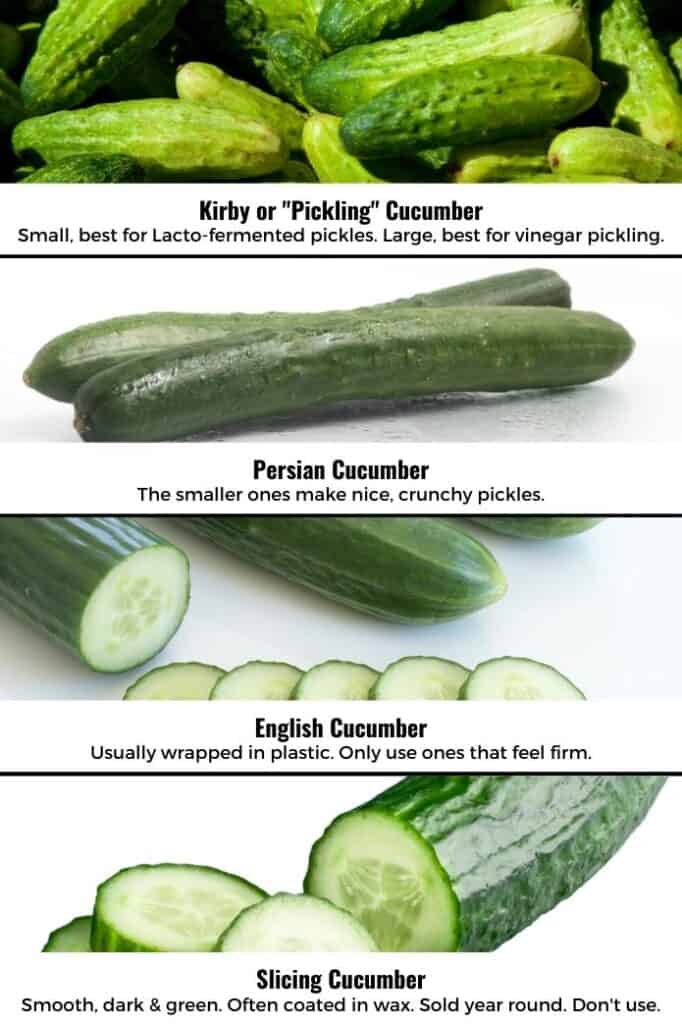
There are two varieties of cucumbers: pickling and slicing. For success with making cucumber pickles, use pickling cucumbers.
They are shorter, bumpy, and lighter green in color rather than the slicing variety which can be soggy after fermentation. Pickling cucumbers have denser flesh, smaller seeds, and less bitter skin.
- Choose cucumbers that are medium-green to green. Avoid cucumbers with very light shade as it’s usually a sign of being overripe.
- Avoid cucumbers with spongy spots—small, black indentions—which could mean they are no longer fresh.
- Cucumbers are supposed to feel heavy, firm, and hydrated. It shouldn’t feel or sound hollow when tapping your fingers against it.
- You can use English cucumbers, which you’ll find tightly wrapped in plastic at the store. Make sure they feel firm. Older ones will feel a bit soft and be challenging to ferment without Kahm yeast growing.
- Small Persian cucumbers work better than Kirby. Persian cucumbers make the crispiest and crunchiest pickles. Kirby cucumbers are more suited to “quick” vinegar pickling.
- Do not use slicing cucumbers. Slicing cucumbers are usually very smooth, dark green, and typically what is sold year-round at the store. Not only do they ferment into a soggy mess, but they are often coated in wax, which disrupts the fermentation process.
- The fresher the better. The cucumbers should have no soft spots and should not look wrinkly. If they have either, then they are on the way out.
- The smaller the better. Small cucumbers tend to keep their crunch better than larger cucumbers
To find the right cucumber, your best bet is to visit your local farmer’s market and talk to the growers. They’ll know the variety of cucumber they grew and what it is suited for.
Your pickles will only be as good as your cucumbers, so choose wisely and only make pickles when local, fresh-picked cucumbers are available. Your success is almost guaranteed.
Trying to make pickles from shrink-wrapped cucumbers pickled weeks ago is a recipe for disaster.
Growing your own cucumbers? The following article from A Gardener’s Table might be of help.
Cucumbers for Pickling: They’re Not All Alike
Ways to Flavor Your Pickles
Get creative and use what you have to hand to flavor your pickles to your liking. Here are a few suggestions:
- Crushed or slivered garlic cloves.
- Thinly sliced onions and a couple of seed dill heads.
- A few dried chili peppers or some fresh jalapeños.
- 1 teaspoon each: fennel seeds, coriander seeds, peppercorns, dill seeds, mustard seeds, celery seeds.
DIY Pickling Spice Recipes
You can also make a batch of your own pickling spice.
INGREDIENTS
1/4 cup whole allspice
1/2 cup mustard seeds
1/4 cup chopped, dried ginger root
1/4 cup black peppercorns
1/4 cup cinnamon sticks, broken into small pieces
6 dried bay leaves, torn into small pieces
1/4 cup whole cloves
1/4 cup dill seeds
1/4 cup mace
1 tablespoon cardamom seeds
1/4 cup coriander seeds
1 teaspoon nutmeg
PREPARATION
Mix spices together and put them into a dark glass jar with a tight-fitting lid. Mix thoroughly before measuring. For maximum freshness, store in a cool, dark area.
And another recipe from the HGTV Gardens blog: Make Your Own Pickling Spice

Approximately 100,000 to 125,000 acres are devoted to growing pickling cucumbers in the United States. They are grown in more than 30 states.
Tips to Successfully Ferment Pickles
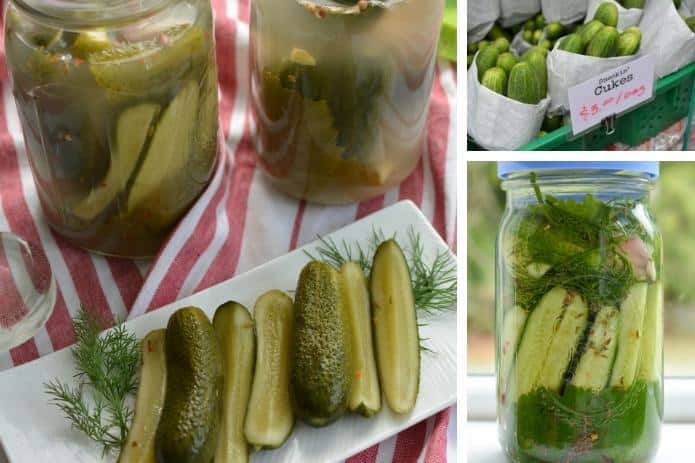
Though making cucumber pickles can be a bit tricky, here are some tips to get you fermenting pickles that make you salivate for more.
- Practice with a few small batches in jars before fermenting in a large crock.
It is much easier to stomach losing the costs of a small jar of moldy pickles than it is a large crock. - Use ultra-fresh and blemish-free cucumbers that have NOT been waxed.
Look for cucumbers that are small, feel firm, are uniform in size, and with thick skin. Taste a few before use and don’t pickle any that taste bitter. The best place to find pickling cucumbers is at the farmer’s market starting in late June. Ask the farmer if they are a pickling variety. - To keep pickles crispy, remove the blossom end.
Gently scrub cucumbers in water before use, trimming off stems and thinly slicing off the blossom end. Blossoms contain an enzyme that softens pickles. - Perk up cucumbers in cold water.
If the cucumbers you’re going to pickle are not fresh-picked and are feeling a bit soft, soak them in cold water for an hour or two. - To keep pickles crispy, add tannin.
Tannins help strengthen the pectins in the cucumbers and keep pickles crispy. Grape leaves are most commonly used, though oak, horseradish, black tea, and bay leaves work too.
The One Ingredient You’ll Need for Crunchy Lacto-Fermented Pickles - Calcium chloride? The pickle industry uses calcium chloride as a firming agent, which is a laboratory product with little history of use for human consumption. I don’t recommend its use and treat my pickle-making as a seasonal ferment.
- Season with a heavy hand.
Cucumber pickles require more seasoning than other pickled vegetables. - Use additive-free salt.
“Pickling” Salt is fine as long as it does not contain iodine or other additives that can interfere with the fermentation process.
I use Himalayan pink salt, a mineral-rich salt. RealSalt is another good choice.
What is the Best Salt to Use When Making Fermented Sauerkraut? - Use unchlorinated water.
Chlorine can interfere with the fermentation process. - Watch for signs of fermentation.
You’ll bubbles rising to the surface and air pockets forming, the skin color changing from bright green to a darker olive green.
The brine will turn cloudy and you’ll notice the pickles sinking in the jar, rather than floating. (As the pickles absorb salt from the brine, the cucumbers’ specific gravity increases while the brine’s decreases.) - Ferment for just 5-10 days, monitoring the “crunch!” along the way.
Check “crunch status” daily starting day 5, immediately moving to the refrigerator at the first hint of softness. Look for a tangy taste and the interior of the pickle changing from white to translucent. - If it’s hot in your kitchen, fermentation for less time. Even better, create a cooler spot. Place jars in an ice chest with a few jugs of frozen water. Results are best when fermenting at 65-68F (18-21C).
- Consume within 2-3 months to enjoy them when crisp.
- Don’t toss that leftover brine!
“A salty swig of pickle juice quenches my thirst on a hot day more than water. Not only will that salty brine replace salt that is lost through sweating but Lacto-fermented pickle juice is also a good source of electrolytes. I’d take it any day over those nasty chemical-filled sports drinks (yeah I’m talking about you, Gatorade).” —Craig Fear, Fearless Eating - Use both the leftover brine and the pickle as a performance-enhancing snack.
“Now, athletes—from NFL players to gravel-grinding cyclists—are turning to the crunchy green treats as a performance-enhancing snack. Pickles are the next big thing in sports nutrition.” —5 Reasons Pickles Are the Weird New Ride Snack You Need to Try, by Bicycling Magazine

The phrase “in a pickle” was first introduced by Shakespeare in his play, The Tempest. The quotes read, “How cam’st thou in this pickle?” and “I have been in such a pickle.”
Lacto-Fermented Pickles Salt Ratio?
Salt is the workhorse in your pickle jar. The right salt concentration is critical for creating the environment for mighty microbes to ferment those sweet cucumbers into sour pickles.
- The right amount of salt encourages the right bacteria—lactic-acid bacteria—to thrive and grow, giving them a competitive advantage over hostile bacteria.
- Too little salt favors harmful bacteria that can not only turn your cucumbers into mush but may cause mold or yeast to grow.
- Too much salt and the lactic-acid bacteria will not multiply. You end up with cucumbers floating in salty water, not pickles.
What is the right amount of salt?
Do Not Use THIS—Or Any—Brine Chart!
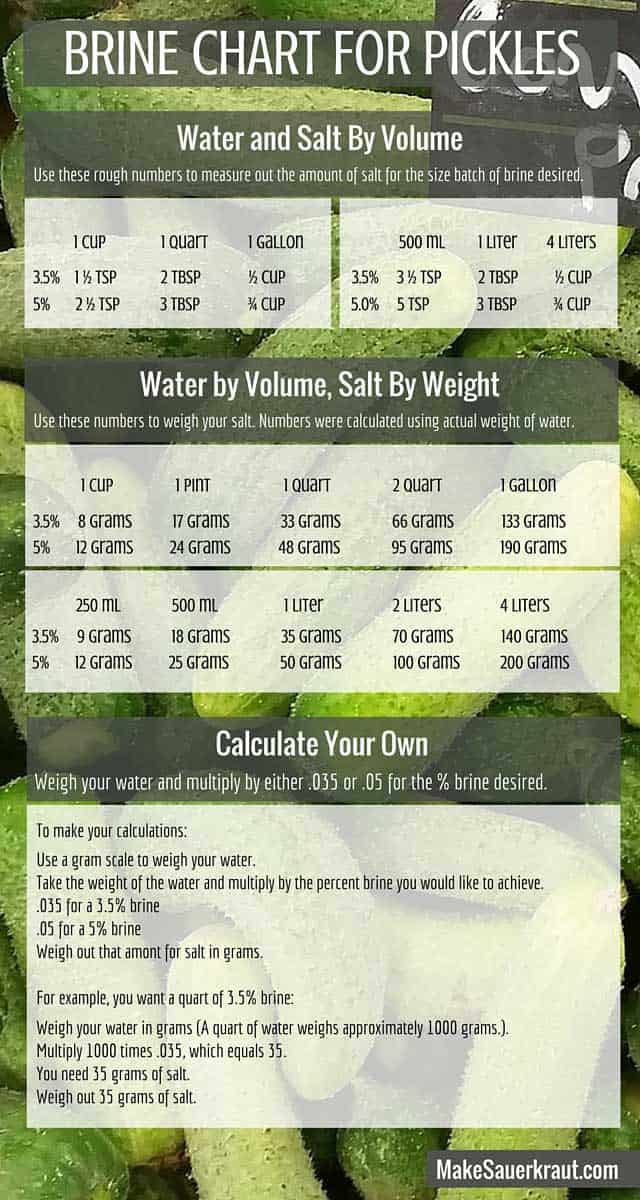
My first recipe for making naturally Lacto-fermented pickles was made by pouring a salty brine over a jar of packed cucumbers.
Some batches turned out perfect, some moldy. Some of the pickles stayed crispy, others turned to mush.
I started experimenting and soon switched to basing how much salt I added on both the weight of the cucumbers and the water. That simple switch made all the difference.
As I researched and developed recipes for my In A Pickle! online course, I realized that you can’t ferment crunchy, tangy pickles by just pouring a salty brine into a jar of packed vegetables.
The bacteria responsible for fermentation, need a set salt concentration to create the lactic acid necessary for a safe ferment.
You have to know the weight of both the vegetables and the water in your jar and calculate your salt based on that.
Once you know this weight, you multiply it by the recommended total salt concentration for the vegetables being fermented (3.0% for cucumbers) and then add the correct number of grams of salt to the jar.
Don’t worry, it’s simple to do and I’ll take you through it step by step.
Salt Concentration Chart FREE Download
Use the button below to get your own printable Salt Concentration Chart.

Cleopatra is said to have attributed her beauty to eating pickles.
Troubleshooting Guide
- Mushy or slimy pickles.
Undesirable microbes grew due to too little salt, too high fermentation temperatures, or blossoms not being removed. Discard. - Pickles with a hollow middle.
The cucumbers grew this way, especially if they are larger and more mature. You can pick out cucumbers like this when you wash them. They float! Perfectly safe to eat. - Shriveled pickles.
Too much salt was used or the cucumbers were not fresh. - Dark or discolored pickles.
Hard water—water too high in iron—was used. Something, spices can cause discoloration, especially ground spices.
How to Rescue a Bad Batch of Pickles
Did life hand you mushy or flat-tasting pickles? Then, make Pickle Relish!
Roughly chop pickles—adding any seasoning appropriate from the pickle jar – in your food processor.
For a bit more flavor, feel free to add a bit of ground turmeric, ground ginger, and celery seed. A tablespoon or so of sugar can be used to make a sweeter relish and some apple cider vinegar will add tang.
Recipes for Fermented Pickles
There are many variations in pickle recipes. The pickles you make with my recipe:
- Are naturally Lacto-fermented.
Bacteria, naturally present on vegetables, eat the sugars in the cucumbers to create lactic acid, a natural preservative that gives pickles their pucker. Outside of salt, that’s all you need to make fermentation happen. - Contain no vinegar.
Pickles can be preserved without vinegar. The salt in your ferment provides the ideal environment for the growth of lactic acid bacteria. Adding vinegar upsets the beautiful and natural balance of acids in your fermenting pickles. - Do not use whey or starter cultures.
Whey (the liquid portion of yogurt that contains beneficial bacteria), and other starter cultures interfere with the natural progression of the fermentation stages. - Are not canned.
Heat processing destroys beneficial bacteria.
And, are consequently rich in probiotics.
Step-by-Step Pictures: How to Make Lacto-Fermented Pickles
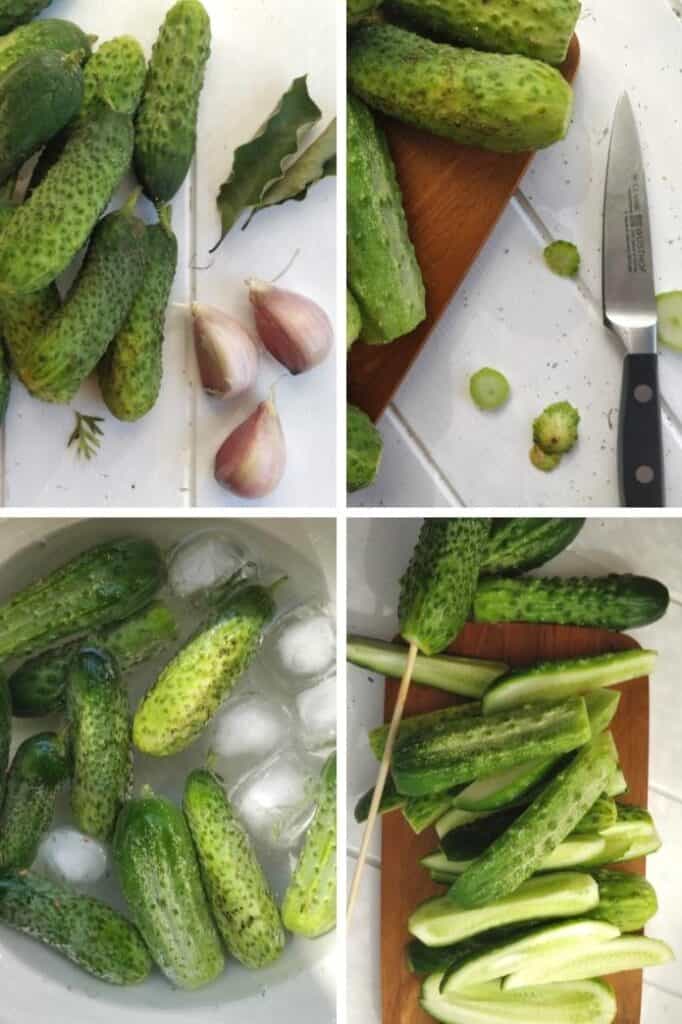
2. Cut off blossom ends (removes the pickles-softening enzymes).
3. Soak in ice water (makes for crisper pickles).
4. Cut into spears. If left whole, use a skewer to pierce a hole, lengthwise.
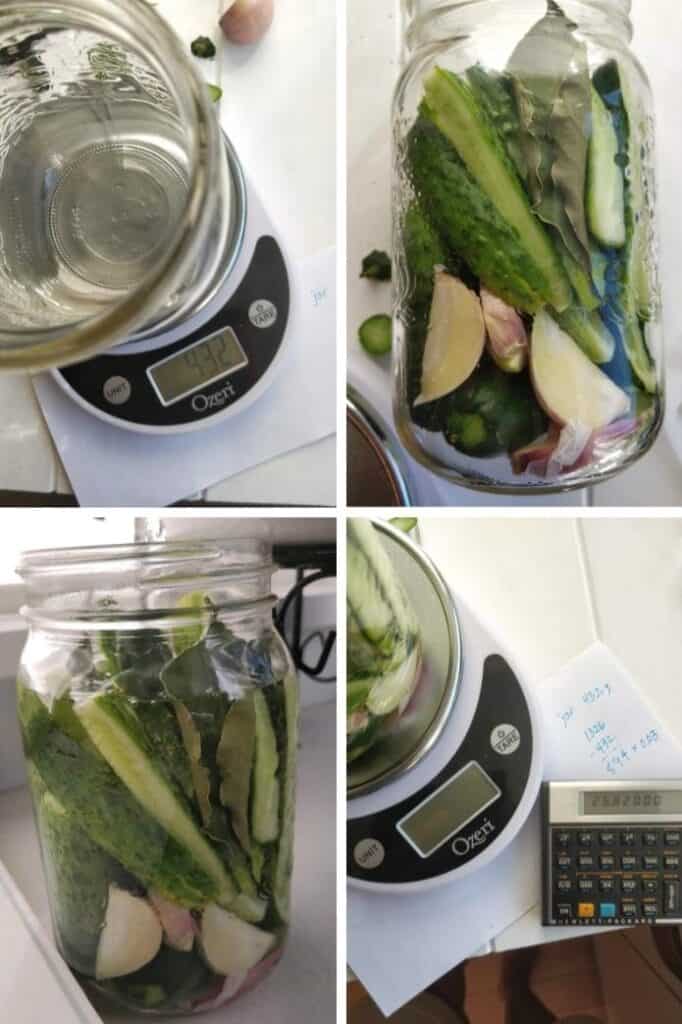
6. Pack jar with seasonings and prepared cucumbers.
7. Fill your packed jar with chlorine-free water.
8. Weigh your jar (packed with cucumbers and water). Subtract the weight of your jar from the weight of your packed jar. Multiply by 0.03 to calculate the number of grams of salt to add.
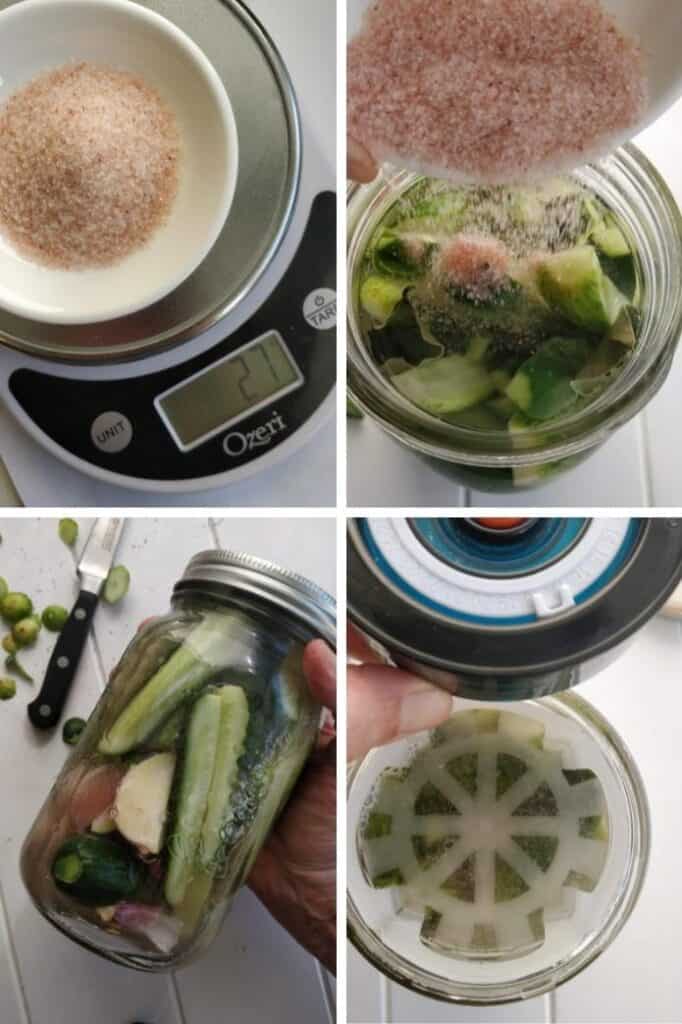
10. Add salt to your jar of packed cucumbers and water.
11. Seal your jar and shake for a minute to dissolve the salt.
12. Add fermentation weight and airlock. Ferment for 5-14 days. (Note: The “weight” in this image is “Canning Buddies” by ViscoDisc. My review: ViscoDisc Canning Buddies REVIEW [Simple & Affordable])
The Five Tools I Grab Every Time I Ferment
Naturally Lacto-Fermented Pickles Recipe
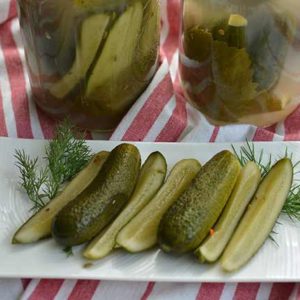
Naturally Lacto-fermented Pickle Recipe
INGREDIENTS
- 1 pound pickling cucumbers
- 1 quart (liter) chlorine-free water
- iodine-free salt
- 2-3 bay, grape, oak or horseradish leaves, OR 1 bag (teaspoon) black tea
- 1 tablespoon pickling spices
INSTRUCTIONS
- Trim blossom end off of cucumbers removing about 1/8 inch.
- Soak cucumbers in ice water for 20-30 minutes.
- Quarter cucumbers lengthwise—or leave whole. If leaving whole, pierce lengthwise with a skewer to allow for better brine penetration.
- Use a digital scale to weigh your empty jar. Write this number down. (In this example, 432 grams.)
- Pack jar with seasonings and prepared cucumbers.
- Top your jar packed with cucumbers with chlorine-free water stopping 1-2 inches from the top of the jar.
- Weigh you jar of cucumbers and water. (In this example, 1326 grams.)
- Subtract the weight of your jar from the weight of your packed jar. (In this example, 1326 – 432 = 894.)
- Multiply this weight by 0.03 to calculate the number of grams of salt to add (In this example, 894 x 0.03 = 27.)
- Tare a small dish and weigh out the correct amount of salt. (In this example, 27 grams.)
- Add measured salt to your jar of packed cucumbers and water. Seal your jar (I use the standard canning lid and rim.) and shake for a minute to dissolve the salt.
- Remove the lid and rim used for dissolving salt. Add fermentation weight and airlock.
- Set in a shallow dish—to catch any brine overflow—and leave to ferment for 5-14 days.
- Ideal fermentation temperature is 65-72° F (18–22° C). Home too warm? 11 Cool Fermentation Tips for Hot Weather
- When pickled to your liking, refrigerate and enjoy the tangy crunch!
Notes and Tips
- Use ultra-fresh and blemish-free cucumbers. Look for cucumbers that are smaller, uniform in size. Do not use cucumbers that have been waxed. Taste a few before use and don’t pickle any that taste bitter.
- Remove the blossom end. Gently scrub cucumbers in water before use, trimming off stems and thinly slicing off the blossom end. Blossoms contain an enzyme that will soften your pickles.
- Perk up cucumbers in cold water. If the cucumbers you’re going to pickle are not fresh-picked and are feeling a bit soft, first soak them in cold water for 20-30 minutes.
- Add tannin. Tannins help strengthen the pectins in the cucumbers and keep pickles crispy. Grape leaves are most commonly used. One tea bag (1 teaspoon) black tea or 1-2 bay leaves also works.
- Use additive-free salt. “Pickling” Salt should be fine. Check the label to make sure it does not contain iodine and other additives that can interfere with the fermentation process. I like to use Himalayan pink salt.
- Use unchlorinated water to make your brine. Chlorine can interfere with the fermentation process.
- Watch for signs of fermentation and taste starting on day 5. Bubbles rising to the surface and air pockets forming. Skin color changing from bright green to a darker olive green. Brine turning cloudy. Pickles sinking in the jar, rather than floating. (As the pickles absorb salt from the brine, the cucumbers’ specific gravity increases while the brine’s decreases.) Pickles tasting tangy. Interior of pickle changing from white to translucent.

Get ready to be surprised by the wide variety of pickles you can safely & easily preserve at home.
Learn the Perfect Pickle Process in my online program and “grow” your own probiotic-rich superfoods. YUM!

For pickles, fermentation was the primary means of preservation until the 1940s, when direct acidification and pasteurization of cucumber pickles were introduced. – Fred Breidt, USDA.
Recipes Using Dill Pickles
If you’re reserving your own personal jars of pickles for burger night and sandwiches, your pickles aren’t living up to their full potential. Check out these recipes that call for pickles.
Love Pickles as Much as We Do? Here Are 6 Delicious Gut-Friendly Recipes To Use Them In—Well + Good
Zupa Ogórkowa – Dill Pickle Soup—Fermented Food Freak
Dill Pickle Dip—Wonky Wonderful
Pickle Vinaigrette—Delish

If you apply an electrical current to a pickle, the saltwater in it acts as a conductor and will cause the pickle to glow in the dark.
Salt Concentration Chart FREE Download
Use the button below to get your own printable Salt Concentration Chart.
Last update on 2024-04-25 / Affiliate links / Images from Amazon Product Advertising API

![Fermented Pickles [The Complete Guide] | makesauerkraut.com](https://www.makesauerkraut.com/wp-content/uploads/2016/07/Fermented-Pickles.jpg)

 This post may contain affiliate links which won’t change your price but will share some commission.
This post may contain affiliate links which won’t change your price but will share some commission.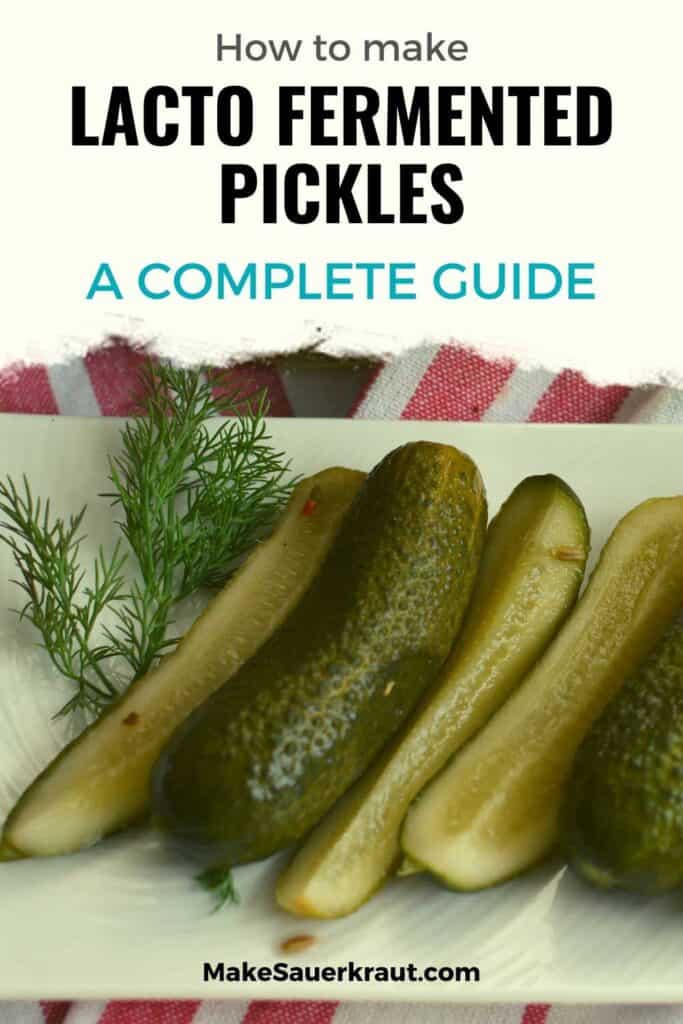
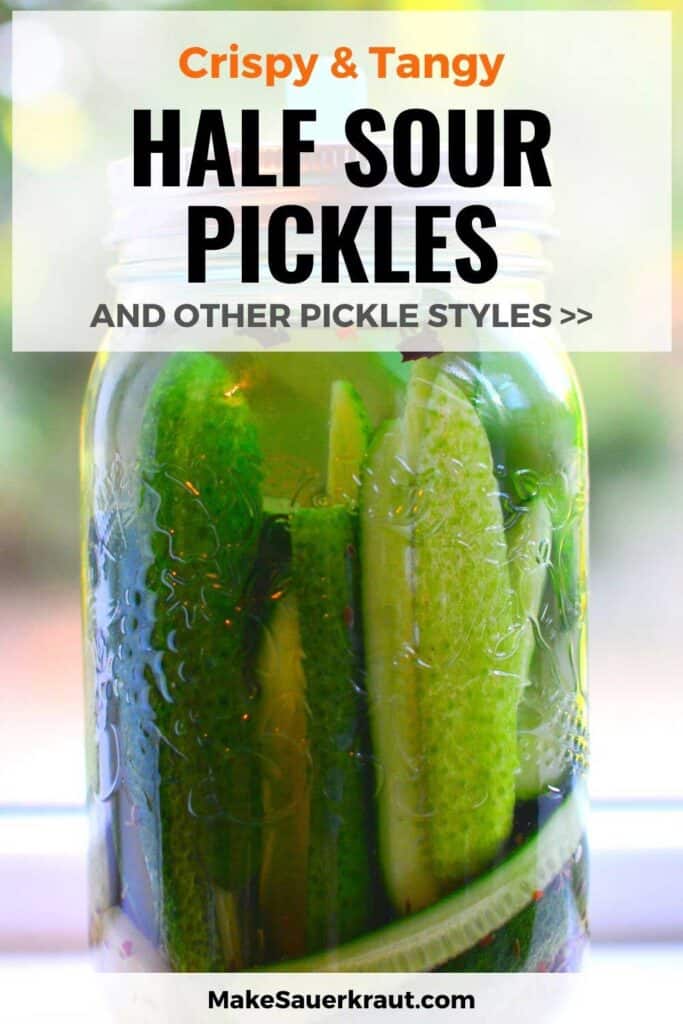
![Fermented Pickles [The Complete Guide] | makesauerkraut.com](https://www.makesauerkraut.com/wp-content/uploads/2016/07/Fermented-Pickles-PLP-293x1024.jpg)


